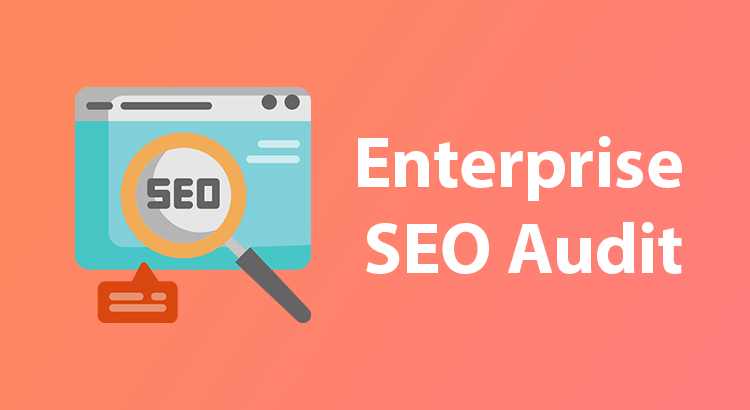An enterprise SEO audit is essential for evaluating large websites and identifying opportunities for growth. These audits help fine-tune your SEO strategies to improve overall online visibility. A well-executed assessment highlights technical issues, content gaps, and on-page problems that may affect your search performance. It also uncovers structural inefficiencies and indexing barriers. This guide walks you through 15 actionable steps to complete a full audit of a large-scale site.
How to Do an Enterprise SEO Audit?
Below is a detailed checklist of the essential elements your enterprise-level site audit should cover. This can serve as your step-by-step guide when performing a full evaluation.
1. Keyword Targeting
The terms you choose to target form the core of your website ranking efforts. As part of your audit, confirm that the keywords you focus on are capable of attracting qualified visitors.
These terms should reflect what your ideal audience searches for when seeking information about your company, industry, services, or products. They also need to have sufficient search volume, which reflects how often people search those terms.
Enterprise sites typically focus on short-tail keywords. These are more general, contain fewer words, and are harder to rank for. However, they can drive substantial qualified traffic when targeted effectively.
2. Keyword Use
You also need to review how well these keywords are integrated throughout your website. Ensure you’re making full use of relevant keyword opportunities while avoiding overuse or unnatural keyword stuffing.
Each page should include the main keyword several times in the body content. One occurrence should ideally appear within the first 100 words. It’s also important to consider including related terms to improve keyword relevance.
3. Indexed Pages
Another item in your audit is confirming that your pages are being indexed by Google. If a page isn’t indexed, it will not show up in SERPs.
This could be due to errors or simply because the page is too new for Google to discover. If the latter is the case, you can submit the URL directly to Google for indexing.
4. URLs
URLs should be clear and informative for both users and search engines. Google considers them when determining your page’s placement in site rankings.
To make URLs SEO-friendly, check the following:
- Each URL should accurately describe the content of the page.
- Avoid using default URLs with random characters or numbers.
- Include the target keyword in the URL.
- Limit URLs to five words or fewer.
- Use hyphens to separate words, not other symbols.
- Stick to lowercase letters only.
5. Title Tags
Title tags show up on SERPs and help search engines and users understand what each page is about.
Check that every page on your site has a unique and concise title tag. It should accurately summarize the page content, be under 60 characters, and contain the page’s main keyword.
6. Meta Description Tags
Meta descriptions give a brief overview of your page and are often shown in SERPs. They also help entice users to click through.
Each page should have a unique meta description. These should be no longer than 155 characters, accurately describe the content, and contain your target keyword. Google may also use them as part of featured snippets.
7. Headings
Headings organize your content and highlight key topics. The H1 tag is the main heading and serves a similar purpose as the page title, but it appears on the page rather than in SERPs.
Your audit should verify that every page includes an H1 tag. You can also include H2, H3, and other headings to better structure the content. Try to incorporate relevant keywords in these headings while keeping them natural and readable.
8. Links
Both the number and quality of backlinks influence your site’s visibility. The more links you have from unique and trustworthy domains, the stronger your backlink profile will be.
A healthy backlink profile supports improved rankings. You can check your backlinks using tools like Google Search Console or Ahrefs.
9. Mobile-Friendliness
Since over half of web traffic now comes from mobile devices, and Google indexes mobile versions first, mobile usability is crucial.
Responsive web design helps your website adapt to different devices, ensuring it functions and displays well on desktops, phones, and tablets.
To test mobile compatibility, use tools like Google’s Mobile-Friendly Test.
10. Site Speed
Page speed directly affects both user experience and rankings. A slow-loading website can drive visitors away, especially since 83% of users expect a page to load in under three seconds.
Google considers speed as a ranking factor, so improving it can benefit visibility. Use Google’s PageSpeed Insights to evaluate your website’s performance.
11. Images
Images make your content more visually appealing and help clarify complex ideas. They can also contribute to optimization efforts if handled correctly.
Use short, descriptive filenames for images and include keywords where appropriate. Words in filenames should be separated by hyphens. For example, use modern-office-desk-setup.jpeg instead of a generic name like IMG_00001.jpeg.
Each image should also have an alt tag that clearly describes it. Where relevant, include keywords. An example of an ideal tag would be modern office desk setup.
12. Robots.txt File
The robots.txt file controls which pages search engines are allowed to crawl. Your audit should confirm that this file is set up correctly and not blocking important pages by mistake.
If you prevent Google from crawling a key page, it won’t appear in search results. Note that robots.txt is not intended for hiding sensitive content. Use a noindex tag or password protection instead.
13. Security
Every enterprise website should have an SSL certificate. This is what gives your site the HTTPS designation and shows the padlock symbol in the address bar.
Having HTTPS builds user trust and can also positively influence your rankings.
14. Sitemap
Check whether your site has an updated XML sitemap. This file helps search engines discover and index your pages.
A sitemap is especially important for large enterprise websites, where the volume of pages increases the risk of some not being crawled or indexed.
15. Content Quality
High-quality content forms the foundation of strong website performance. Ensure that every page delivers unique value to users.
Pages that lack substance should either be updated to be more useful or removed altogether. If duplicate content exists, use canonical tags to signal the original version to search engines.
Summary
A thorough enterprise SEO audit involves assessing everything from keywords and URLs to page speed and security. By following the 15 steps in this guide, you can uncover optimization opportunities that improve visibility and drive qualified traffic across a large-scale website.


